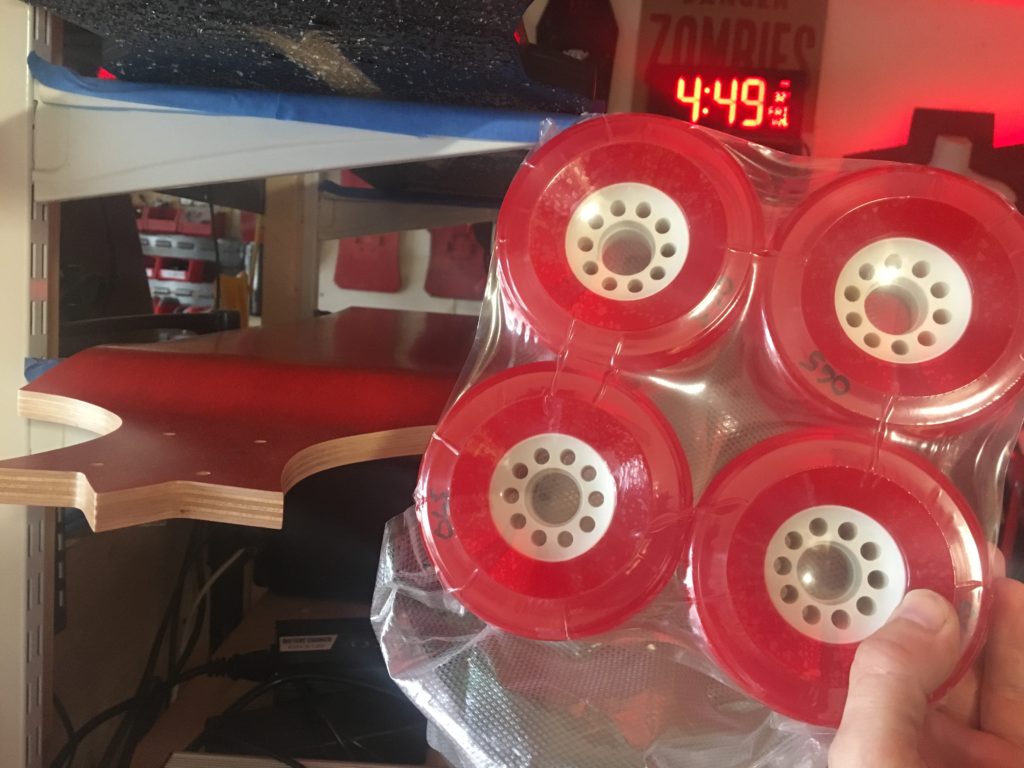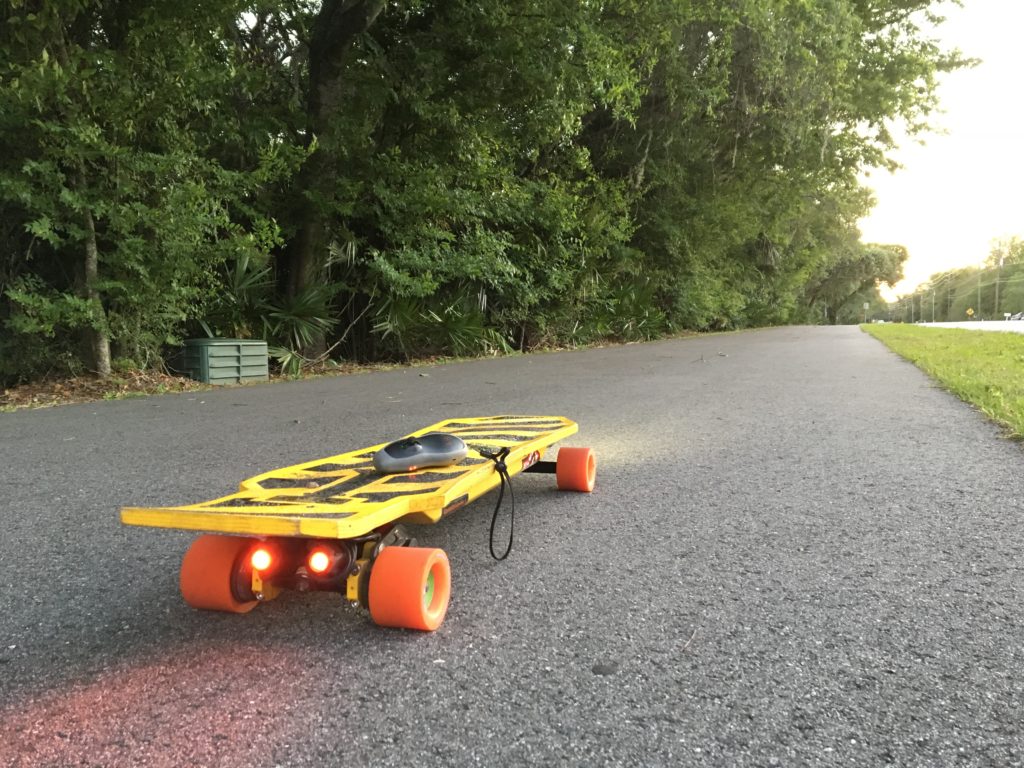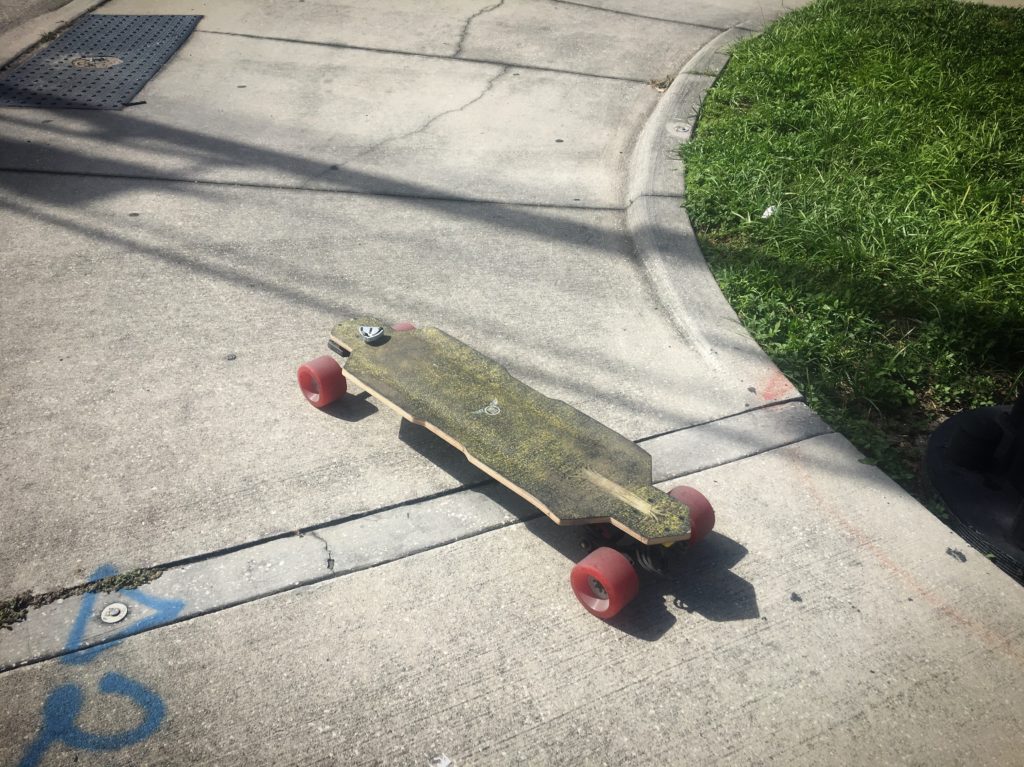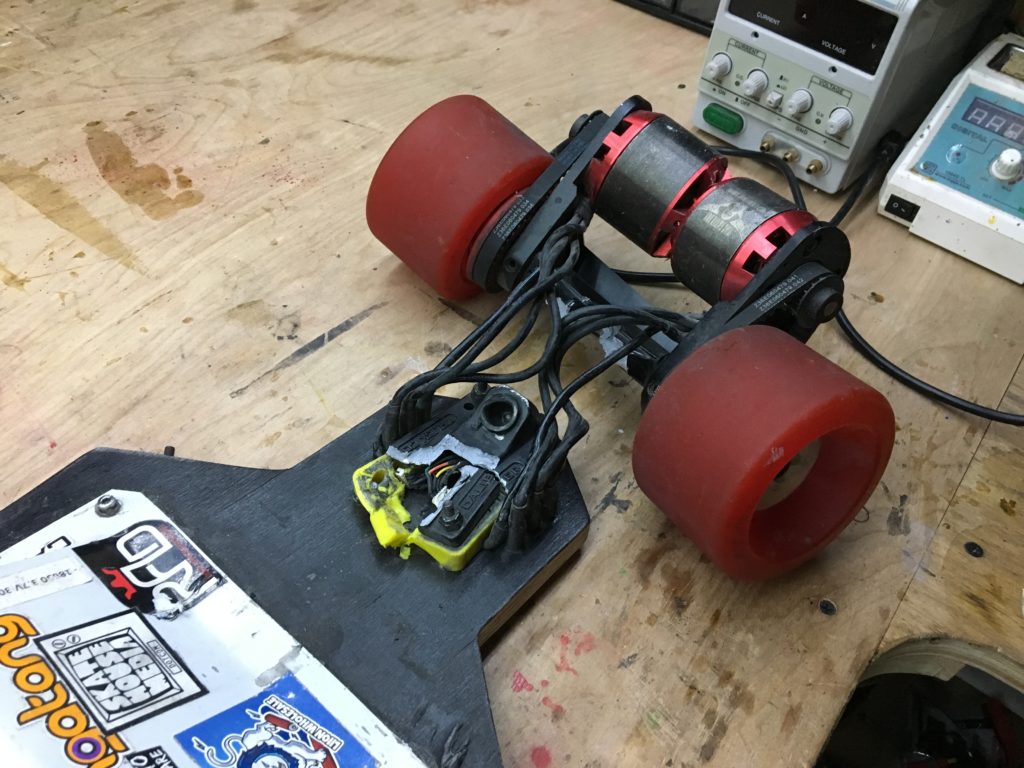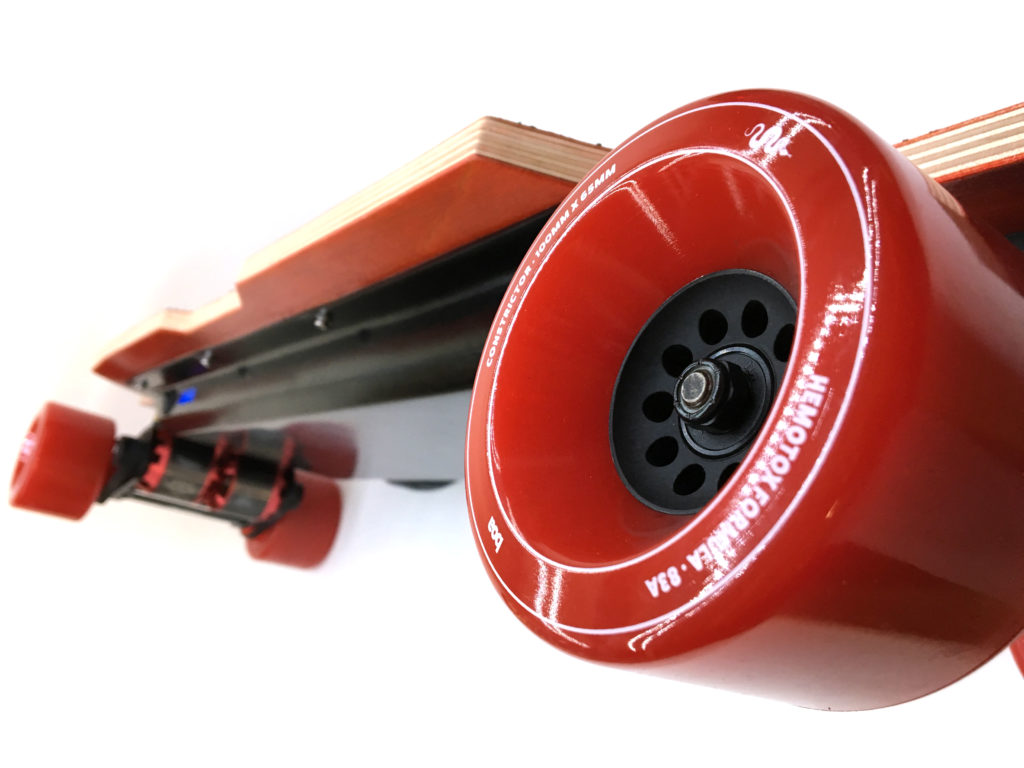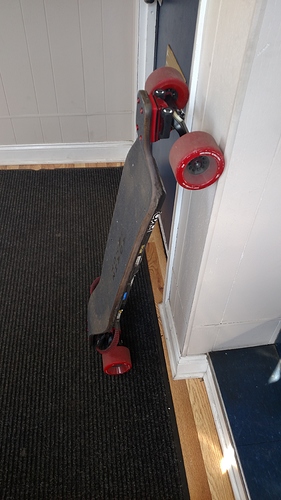Originally published at: http://www.esk8.news/2019/01/10/boa-constrictors-are-the-absolute-shit/
Some time ago, in late 2017, there was an interview with a few of us pro builders. While most of the details escape me because it was late and I was having too much fun with it, two big ones stay clear in my head. First, I was wearing a Psychotiller Electrical Longboard Supply trucker hat that Dave sent me. That bit was memorable because we’re basically direct competitors, but really good friends anyway. Secondly, Jed Boards was there talking up their gear drive system and showing off their boards.
At some point during the discussion, they mentioned the size of their motors was in the 40xx class and the jokes began, followed by a good 3 minutes of me revving my motors and drowning out the conversation, followed by other jokes, and generally a whole lot of friendly banter culminating in me leaving the session surprisingly impressed with their highly efficient gear driven product. Long story short, Jeremy of Jed Boards and I have been good friends ever since. He would send me pics of some cool shit they did, and I would reply with clever comments while stifling my insane jealousy of his obviously well backed venture. My own venture, as you probably know, is not well backed at all, but I digress. Occasionally I would even send him things, like short videos of the very large, very loud (BLDC mode anyone?) motors I use on my own boards.
As time went on we stayed in touch, and one day he told me there would be these new wheels coming. New wheels you say? Yes, and they would be coming from a company called Boa. Well then, who the hell was Boa I demanded with interest piqued. Boa was a new wheel company with a new urethane formula called Hemotox that Jeremy basically invented. It was rather shadowy and cryptic, but when offered a set of prototype Constrictors which would be the 100mm variant of their new wheels, I decided it was all above board. Of course I was going to try a new prototype thingy. More bullshit for the bullshit pile. We’ll ride them hard and chunk them in a few months, I thought to myself. Then I’ll write a clever article about them at some point after their release.
The Arrival
Fresh prototypes ready for abuse!They arrived with all the indications that they were in fact prototypes. A sharpie was used to scrawl a batch number on the inside of the wheels, the cores were white instead of the black ones used in the final release, and there was no screen printing on them at all. They were huge at 100mm in diameter with a 65mm contact patch, and relatively cushy at 83A. They were also translucent red, which is clearly the most high performance color available. My god they were monsters. But not too monster-y. Maybe just monster enough?
Now is a good time to point out that at the time I was not yet a big fan of big thane. In my mind, people were just racing to the bottom to get the largest wheels they could. “Its smoother” they would say. “Its more comfortable” they would say. To all of which i would reply, “These are fucking skateboards and you’re trying to turn them into trucks.” I was far too happy on sub 90mm wheels which gave me plenty of torque and feel of the street, and I felt like big thane was just going to creep in and take that away from everybody with their new hotness. I was still building skateboards that happened to be electric, and everyone else was going in some other weird personal vehicle direction. Now that I’ve got that full disclosure off my chest, lets continue discussing the Boas.
This was my ride at the time. Notice the orange Kegels and not something gargantuan like ABEC 107s or Slick Revolution 110s or MBS All Terrain 100s. Boa Constrictors will not fit here.When I opened them up and held them in my hands they felt good. They were heavy, but not too heavy, and somehow both hard and soft at the same time. They were huge, but somehow not too huge. Usually I can hold a wheel and tell you if its going to chunk, slice too easy, rebound all over the place when riding shit pavement, or stay glued to the path. I couldn’t tell what these were going to do because they felt kind of weird. They seemed like they might be too bouncy and yet maybe too soft for the real streets, resulting in a weird ride and shredded thane. This was definitely a new formula. They certainly didn’t feel like ABEC SuperFlys, or like anything from the Labeda factory that I had previously tried, and they were definitely a massive step up from that generic garbage a lot of people were riding at the time.
I suddenly realized that I didn’t have a board I could test them on. Up until then, I had been riding around on a Scarlet deck with either Ollin Popocas or orange Orangutan Kegels. It was time for a new board, so I rush jobbed a Witchblade just for the occasion.
The Ride Testing
The new ride. I had been wanting a Witchblade for a while. That’s probably funny to you for some reason.It didn’t take long to get the board together using the internals from my old one, the freshly pressed Witchblade deck and a new box. I rushed the grip job because I was too busy thinking about how those wheels would feel. I figured I could go back later and fix it as long as it didn’t get run over by a bus or anything. After getting it all together and taking it out to the street, it was finally time to see what was so special about these wheels Jeremy came up with.
Coming from Kegels meant that I was running smaller wheel pulleys, but that didn’t seem to slow the motors down too much on launch. Even with a 16/32 ratio on 100mm wheels, this 12S board on 3200 Watt 6355s equipped with sensors was still launching reasonably fast. On top of that, I noticed I wasn’t really feeling any traction loss or slide in the usual situations. The Boas were gripping the road much more than I expected both at launch and in carves around bends. As I continued to ride through my neighborhood of mixed street conditions over asphalt in various states from ruin to newness, I felt more and more confident with them. I was completely in love with these wheels before I even got through the mile and a half back to the house.
Soon after this test I experimented with a few different wheel pulley sizes and settled on a 36T. Ultimately, a 16/36 motor to wheel pulley ratio felt really right on these and provided a nice stiff launch, better delivery of power throughout the throttle range and a reasonable top end of around 37mph. And in slow mode, which is about 80% full power on the remotes I’m using, it feels smooth and powerful in the mid and top end still yet tame enough for a noob to launch from a stand still if they observe the necessary caution, such as leaning into the acceleration and not allowing the board to street the back of their skull.
I decided to leave them on my board and just ride them every day until they fell apart. Over the next few months, I rode them on the bike trails and was amazed at their handling on proper asphalt. I rode them through all of our local neighborhoods and all the shitty streets in them and was amazed at how they damp vibration and grip the cheese grater roads full of gashes and potholes at speed. I rode them up on good sidewalks, bad sidewalks, and several areas of dirt path with no sidewalk. I rode them through the grass in the park, and down dirt roads.
The real test was going to be the job commute, however. 10.1 miles each way to my day job through roads with no bike lanes, roads with terrible bike lanes, bad sidewalks, construction sites that leave you hobbling through gravel, dirt, and broken glass, and areas filled with so much wreckage, trash, and debris it would make anyone with a belt driven board shudder. I embarked on this commute with this new board sporting these new wheels any time the weather would allow it, in addition to regular hard riding around the neighborhood streets and bike trails on the weekends.
It wasn’t unusual to put anywhere from 20 to 30 miles on these wheels in a single day. And every day I was picking glass out of the urethane, rocks out of the belt pulleys, and observing something unusual about this wheel formula. It sliced a bit, but never once chucked, and was perfectly capable of hiding glass shards from the shoulder of the road inside the urethane in excess of a centimeter in length. Often I would see a new wound on the wheel and think that I just hit a rock really hard, but after literally digging into the wheel for a few minutes, would pull out a rock sized piece of windshield that the wheel was perfectly willing to hide from me forever had I not been looking for it. They also had a fondness for the large nail-sized staples found near construction sites and more than once had one almost completely hidden from me, in spite of being almost an inch and a half long.
It was during one of these commutes that the ultimate “chunking test” happened. As I was crossing an intersection in downtown Orlando, a bus cut me off, forcing me to jump off my board. With a little bit of really bad timing, I was able to inadvertantly employ the bus in my wheel testing. The bus was also kind enough to test my deck, and the motor mounts, and basically everything on the ass end of my board by running over it and crushing everything.
Public transportation for the win.The bit that really blows my mind is that they still hadn’t chunked. Never mind my motor mounts which stayed perfectly aligned with their respective pulleys regardless of the fact that the hanger was bent into a horseshoe, The wheels were just now starting to look like maybe they might start getting some damage. And all it took was a LYNX bus running my board over. The magnets in both motors were shattered, the truck hanger was bent the fuck up, the baseplate for the truck was in multiple pieces, and my deck was surprisingly resilient and only splintered a little. Needless to say, I was kind of shocked that the wheels still weren’t chunking. And seriously pissed off that I was going to have to call for a ride.
By now of course it had been a couple of months since the prototypes had been sent to me, and I already had my hands on the final product. So once again, it was time to build myself another board, this time with the production wheels and a paint job to match them.
To this day, I’m still riding on those production Boa wheels. The pre-production wheels are still in the spares drawer and occasionally get brought out when we need to build something ridiculous to test something, like the latest ESC or remote. Sometimes we just get them out to reminisce about the bus.
The Verdict
These wheels are not only a part of my daily rider now, but also the default wheel for my customer’s builds. They’re just that good. To put it bluntly, these wheels are the real fucking deal. With slightly less mass, better durability, better vibrational damping, and better chunking resistance than SuperFlys, and the utilization of what is becoming the standard wheel core type for electric skateboards (talking about Kegel style cores on wheels predominately made by Labeda), They simply outperform every other “big thane” wheel I’ve tried and they add convenience while doing it.
My only complaints about them is that there needs to be more color options. At the moment, red and white are the only choices for the Constrictors. And if you’re a tight wad, the price may be a bit high for you. Of course if you’re not spending over a hundred bucks on a set of wheels this size, you’re probably not getting good ones anyway. Big thane isn’t cheap if you want high quality.
Quality: 10/10
Price: 9/10
Feel: 10/10
Aesthetic: 8/10
Reliability: 9/10
Durability: 9/10
